Since their arrival at TBI-Ileret, students have continued to expand their understanding of ecological research methods. Here, they have also been introduced to new TAs, the Dassenatch people, and more heat than they were accustomed to at Mpala. They all are adjusting really well to this new environment which is great since this will be our home for the next 7 weeks.
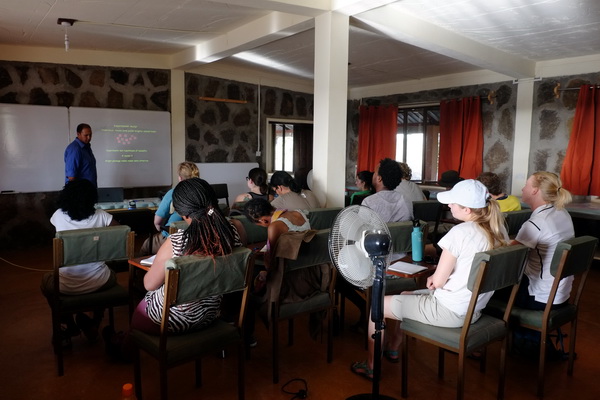
students in their first lecture at TBI Illeret (photo: Deming Yang)
Dr. Dino Martins introduced the students to the ecology of Lake Turkana and the areas surrounding the lake. He talked about the importance of ecological studies delving further to incorporate how ecology affects a community’s economy in general, and hence influences cultural practices like pastoralism and marriage. Cattle are especially important in the Dassenatch culture. This in turn affects the general welfare of the members of the community – for example, cattle raids are common in Ileret since young men require cattle to pay bride price for a wife.
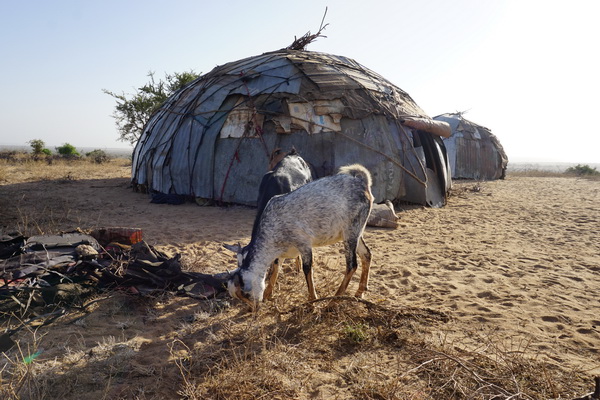
Goats near a Dassenatch hut. livestock are very important in the Dassenatch culture (photo: Rosie Bryson)
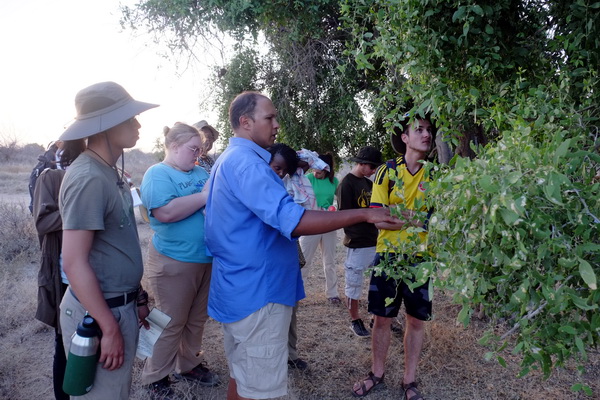
Students taking notes on the ecological significance of the Toothbrush tree- Salvadora persica (photo: Deming Yang)
Students were also given a chance to practice ecological data collection methods. Dr. Martins introduced them to tree size estimation methods which are crucial in determining how plants survive and their contribution to the general ecology of an area. The students estimated the size of a huge Acacia elatior plant and how it copes and becomes successful in harsh environments by producing dehiscent seeds.
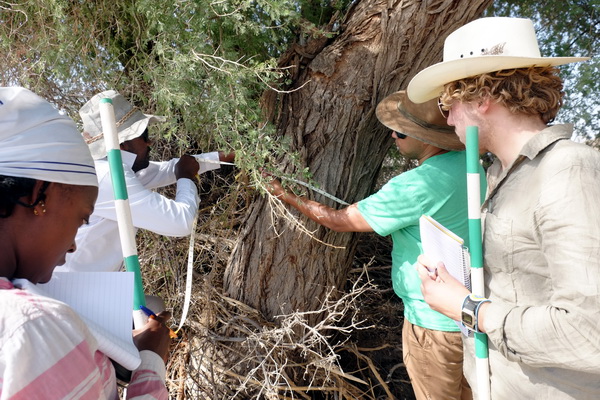
Kifle, Ann, Tom and Dr. Dino estimating the width of Acacia elatior (Photo: Deming Yang)
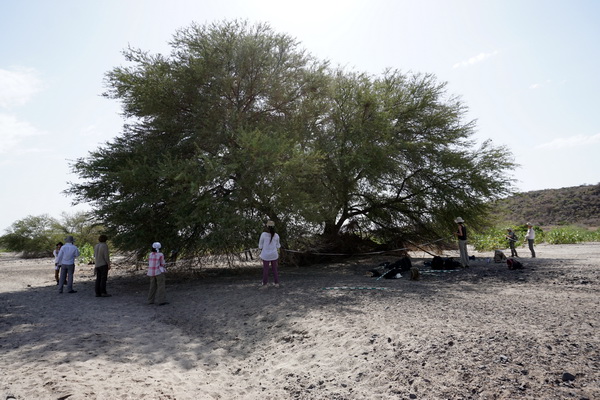
students taking measurements on an Acacia elatior tree(photo: Rosie Bryson)
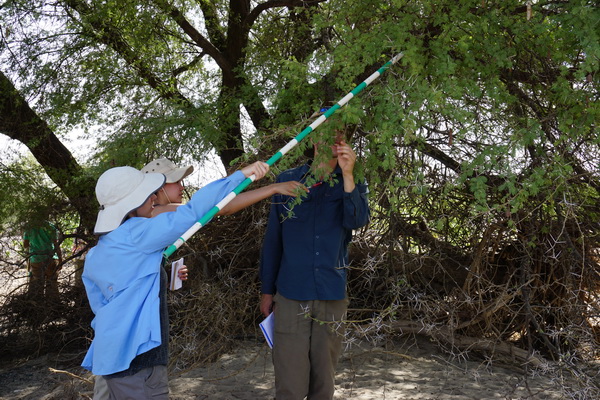
Lydia, Regina and Nicholas counting pods on Acacia elatior tree (photo: Rosie Bryson)
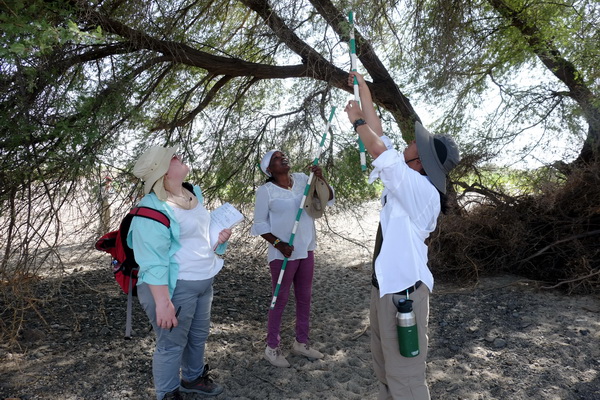
Meghan, Pauline and Rohan estimating the number of branches on an Acacia elatior (photo: Deming Yang)
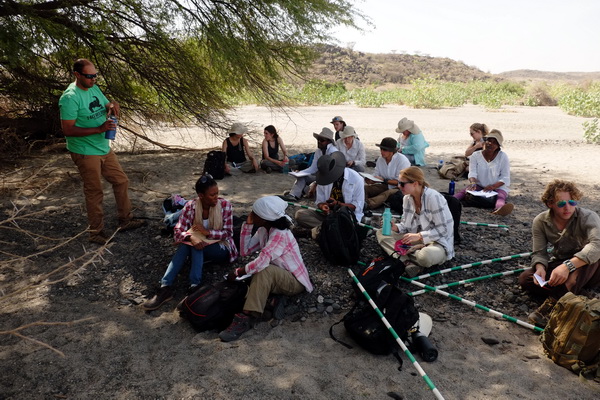
Students doing calculations to estimate the size of Acacia elatior (Photo: Deming Yang)
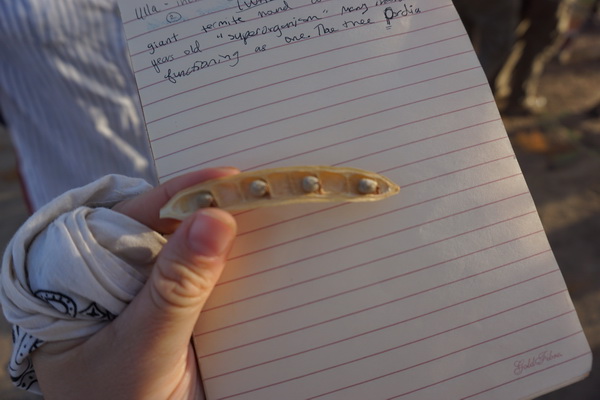
Dehiscent seeds of the Acacia elatior (Photo: Rosie Bryson)
On the same day, the students also did measurements on the desert rose plant to determine the plant’s growth pattern and its significance for the survival of desert roses in the harsh environment.
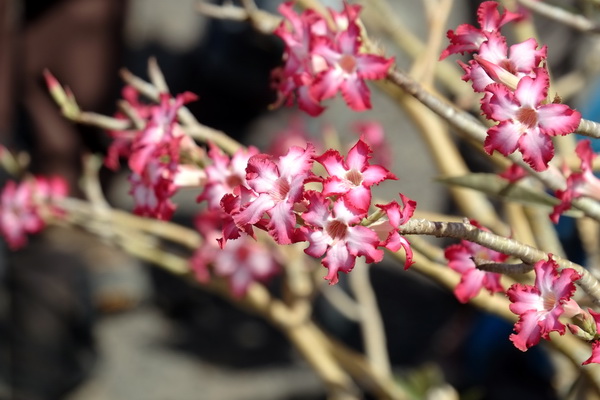
The beautiful Desert Rose (photo: Deming Yang)
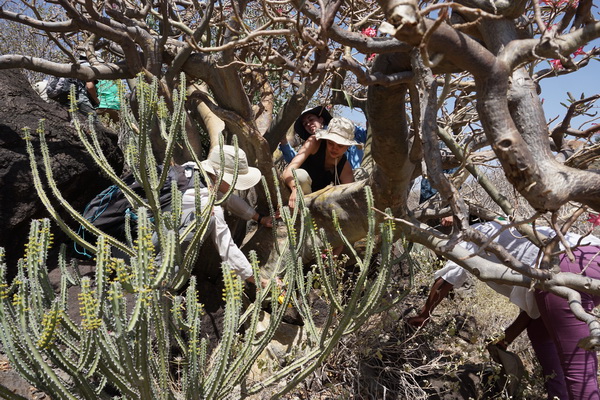
students estimating the size of a Desert Rose plant (photo: Rosie Bryson)
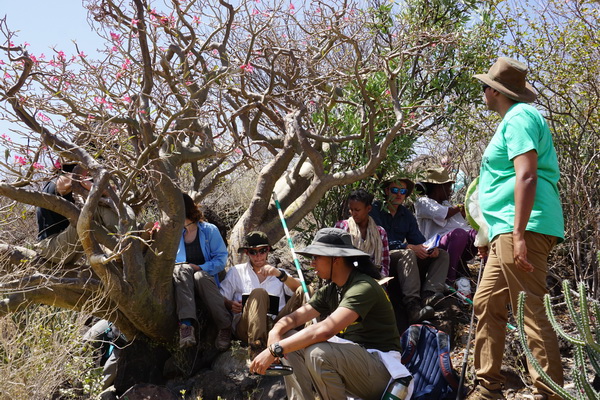
Students taking a break after estimating the size of a Desert Rose (photo: Rosie Bryson)
In the evening, we investigated on the effects of grazing plants by comparing data from the Indigofera spinosa plants from within the TBI compound and outside the compound. It was clear that the Indigofera plants outside the compound had less pods and were much more smaller in size than the plants inside the compound since they were grazed on by goats.
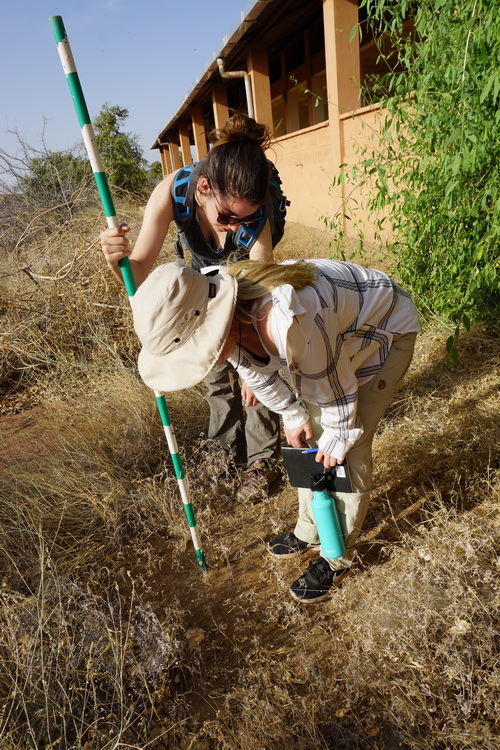
Lydia and Ulla counting indigofera pods (photo: Rosie Bryson)
The week has been full of many field excursions especially to the area near Kokoi where students did plants measurements. There were also evening walks where students were introduced to the local vegetation, its adaptation to the environment and its contribution to the general ecology of the area. We also had 2 field trips to the Lake which were the highlight of the field trips since they ended up with a swim and watching beautiful sunsets over the lake.
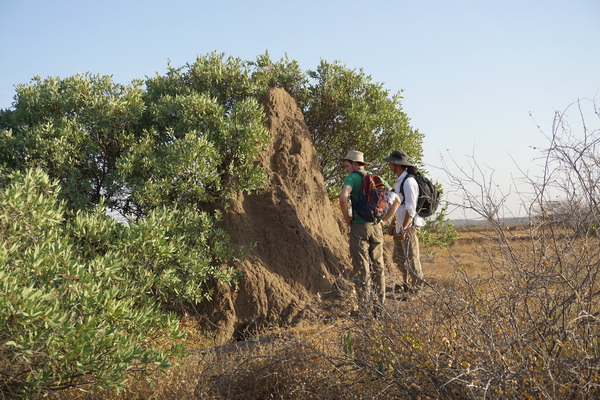
Nicholas and Rohan examining an ant hill during an evening walk (photo: Rosie Bryson)
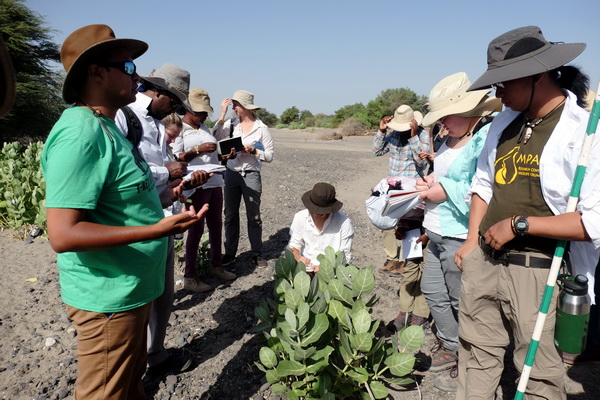
students taking notes on the calotropis plant (photo: Deming Yang)
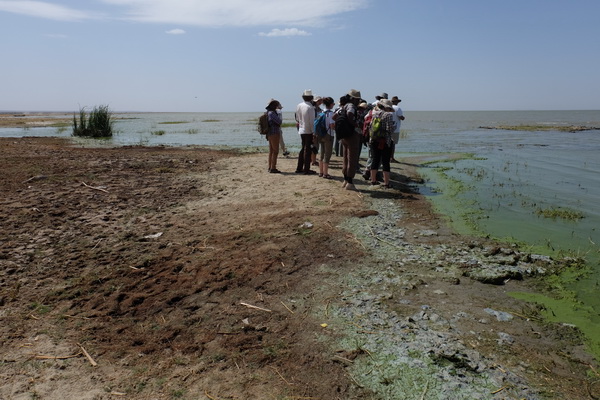
Students studying the algae on the shore of Lake Turkana (photo: Matt Baldes)
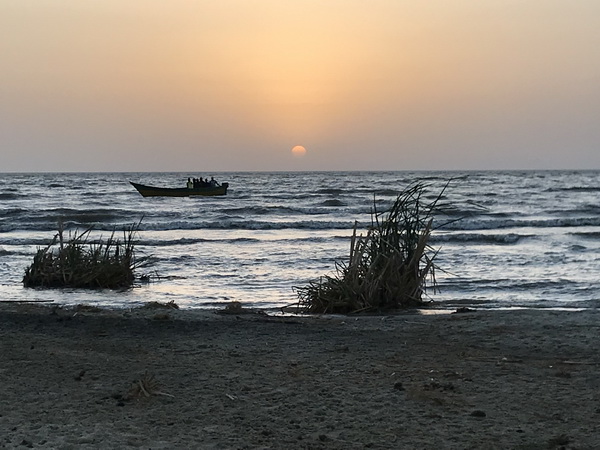
Sunsets from Lake Turkana(photo: Rosie Bryson)
The students also worked on project proposals for ecological issues which they thought significant to solve in Kenyan Dry Lands as inspired by the Mpala Ecosystem. The project proposals are important since they offer the students a chance to employ critical thinking in order to solve ecological problems and delve deeper into understanding scientific data collecting methods through literature research. The students presented their proposals to their classmates who offered them feedback on how to improve on their projects. This positive criticism is important since the students get to help each other and improve on their proposal’s final drafts before submitting them for a final review. A final trip to the lake on Friday marked the end of the ecology module.
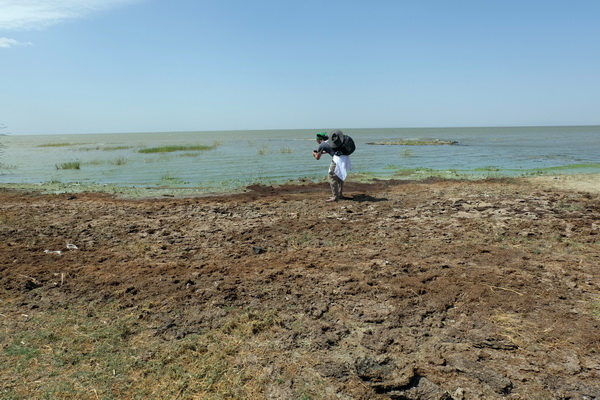
Rohan takes a photo for his Ecology project proposal (photo: Matt Baldes)
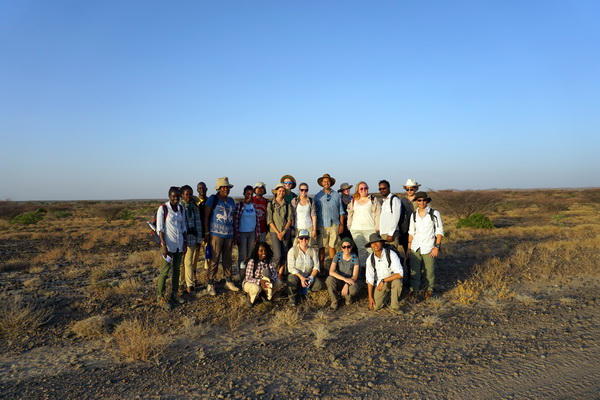
a group photo at the end of the Ecology module(photo: Rosie Bryson)
We are excited for the start of the Geology module come Monday!





